Comments / Questions (25)
![]() Samantha wrote:
Samantha wrote:
Hi, this is my first sweater project , sorry if I missed this information in the pattern instructions, do you recommend blocking for this pattern and are the finished garment measurements pre blocking?
16.11.2025 - 14:15DROPS Design answered:
Hi Samantha, No we do not recommend blocking when working sweaters. The finished garment measurements are therefore the measurements after you have finished your project. Regards, Drops team.
17.11.2025 - 07:00
![]() Line wrote:
Line wrote:
Hej kan det passe at hvis jeg vil strikke den i str. M i Drops Snow skal jeg købe 7 nøgler?
06.11.2025 - 12:33DROPS Design answered:
Hei Line. Nei, du trenger over dobbelt så mye, ca 15 nøster med DROPS Snow. mvh DROPS Design
17.11.2025 - 18:08
![]() Meike wrote:
Meike wrote:
Ich möchte gerne diesen Pullover mit einem Faden Air und einem Faden Kid Silk stricken, geht das und was muss ich bei den Zu ahnen und Abnahmen berücksichtigen?
03.11.2025 - 19:38DROPS Design answered:
Liebe Meike, Sie sollten die Maschenprobe einhalten, dann müssen Sie auch nichts bei den Zunahmen und Abnahmen umrechnen, wovon generell abzuraten ist. Sie sollten dazu statt 1 Faden Kid-Silk 2 Fäden Kid-Silk nehmen (plus den Faden Air), damit erreichen Sie eine vergleichbare Garnstärke wie mit 2 Fäden Air. Nehmen Sie die Nadelstärke, mit der Sie die Maschenprobe erreichen. Viel Spaß beim Stricken!
03.11.2025 - 22:43
![]() Mette wrote:
Mette wrote:
Jeg forstår ikke udtaget: Tag 1 maske ud på hver side af 2 masker - man sætter jo kun en markør?
06.02.2025 - 09:03DROPS Design answered:
Hej Mette, Raglanudtagningen sker på hver side af 2 masker ret i hver overgang... se forklaringen øverst :)
12.02.2025 - 11:17
![]() Luisa wrote:
Luisa wrote:
Buongiorno , grazie per questo bel modello con spiegazioni ; come faccio a sapere quanti cm corrispondono alle taglie ? Così da scegliere la più giusta ? Grazie cin anticipo Luisa
12.12.2024 - 18:35DROPS Design answered:
Buonasera Luisa, lo schema delle misure in cm è riportato in fondo alla pagina. Buon lavoro!
13.12.2024 - 22:46
![]() Kathi wrote:
Kathi wrote:
Ich stricke Größe xxl. Ich habe für das Vorder und Rückseite jeweils 66 Maschen und für die ärmel 52 Maschen. Wie komme ich bei der Größe auf 74 Maschen für daß Vorderteil? Da müsste ich ja pro Seite 4 Maschen vom ärmel wegnehmen? Das kann doch nicht stimmen, oder hab ich jetzt einen Denkfehler? Habe alles genau nach Anleitung gemacht
10.12.2024 - 21:58DROPS Design answered:
Liebe Kathi, bei der Verteilung werden die 4 ersten und die 4 letzten Maschen von jedem Ärmel vergeben, so sind die 52 M von jedem Ärmel so verteilt: 4 M für Rumpf, 44 M für den Ärmel, 4 M für Rumpf. Viel Spaß beim Stricken!
11.12.2024 - 09:05
![]() Moorlama wrote:
Moorlama wrote:
Hallo, meine Maschenprobe ist 11 Breite, 16 Maschen Höhe. Wie muss ich die Höhe auf das Muster anwenden? Danke
12.11.2024 - 10:18DROPS Design answered:
Liebe Moorlama, stricken Sie die Anleitung wie beschrieben, die Höhe ist in cm gegeben, so können Sie einfach anpassen, beachten Sie nur, daß Sie dann aber wahrscheinlich mehr Wolle brauchen werden. Viel Spaß beim Stricken!
12.11.2024 - 15:45
![]() Henna Haverinen wrote:
Henna Haverinen wrote:
Voiko tähän käyttää lanka ryhmästä c esim. Air + alpaca silk lankaa? 😊
20.10.2024 - 05:25DROPS Design answered:
Kyllä, voit käyttää kyseisiä lankoja.
21.10.2024 - 18:25
![]() Sylviane Gaspard wrote:
Sylviane Gaspard wrote:
Bonjour et merci. J’aurais une autre question : est ce que je peux tricoter le dos/devant en aller-retour plutôt qu’en rond ? Verra t-on une différence dans le rendu des points ?
16.09.2024 - 09:26DROPS Design answered:
Bonjour Mme Gaspard, si votre tension est la même quand vous tricotez en rond (empiècement) et en allers et retours (dos/devant comme vous le souhaitez), alors il n'y aura pas de différence. Pensez à vérifier votre tension en rond/en allers et retours pour être sûre de vous. Cette leçon pourra aussi vous aider. Bon tricot!
16.09.2024 - 16:54
![]() Sylviane Gaspard wrote:
Sylviane Gaspard wrote:
Bonjour, je ne comprends pas les dimensions du schéma du pull : les 9 cm correspondent au col entier tricoté en côtes 2/2, donc que représente les 4 cm en pointillés ? Dans les explications on a 9cm de col puis 22-24... cm jusqu’aux emmenchures.
14.09.2024 - 22:59DROPS Design answered:
Bonjour Mme Gaspard, les 4 cm sur le côté correspondent à la hauteur d'épaules, les 22-28 cm correspondent à la hauteur du raglan, mesurés à partir du milieu devant (ils vont donc s'additionner aux 4 cm de l'épaule). Bon tricot!
16.09.2024 - 08:29
Mossy Slopes Jumper#mossyslopesjumper |
|
 |
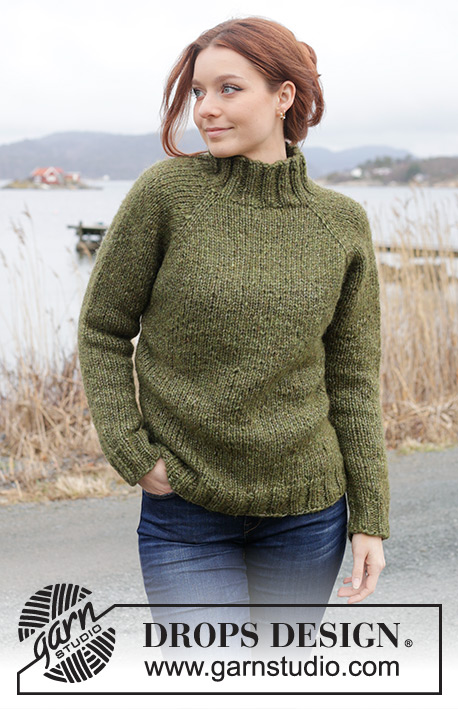 |
Knitted jumper in 2 strands DROPS Air or 1 strand DROPS Wish. The piece is worked top down, with high neck and raglan. Sizes XS - XXL.
DROPS 244-17 |
|
|
------------------------------------------------------- EXPLANATIONS FOR THE PATTERN: ------------------------------------------------------- RAGLAN: Increase 1 stitch on each side of 2 knitted stitches in each transition between body and sleeves (8 stitches increased on the round). Increase by making 1 yarn over which is knitted twisted on the next round to avoid a hole. Work the new stitches in stocking stitch. DECREASE TIP (for sleeves): Decrease 1 stitch on each side of the marker-thread as follows: Work until there are 3 stitches left before the marker-thread, knit 2 together, knit 2 (marker-thread sits between these 2 stitches), slip 1 stitch knit-wise, knit 1 and pass the slipped stitch over the knitted stitch (2 stitches decreased). ------------------------------------------------------- START THE PIECE HERE: ------------------------------------------------------- JUMPER – SHORT OVERVIEW OF THE PIECE: The neck and yoke are worked in the round with circular needle, from mid back and top down. The yoke is divided for body and sleeves and the body is continued in the round with circular needle. The sleeves are worked in the round with short circular needle/double pointed needles. NECK: Cast on 52-56-60-64-68-68 stitches with short circular needle size 8 mm and 2 strands DROPS Air or 1 strand DROPS Wish. Change to short circular needle size 7 mm and work rib in the round (knit 2, purl 2) for 9 cm. Insert 1 marker; the yoke is measured from this marker. YOKE: Insert 4 marker-threads without working the stitches as follows: Count 8-9-10-11-12-12 stitches (half back piece), insert 1 marker-thread here, count 10 stitches (sleeve) insert 1 marker-thread here, count 16-18-20-22-24-24 stitches (front piece) insert 1 marker-thread here, count 10 stitches (sleeve) insert 1 marker-thread here. There are 8-9-10-11-12-12 stitches left after the last marker-thread (half back piece). Change to circular needle size 8 mm. Work stocking stitch and increase for RAGLAN – read description above. Increase for raglan every 2nd round 14-16-17-17-19-21 times in total = 164-184-196-200-220-236 stitches. REMEMBER THE KNITTING TENSION! Continue with stocking stitch but without further increases, until the yoke measures 22-24-25-26-27-28 cm from the marker. Divide for the body and sleeves as follows: Knit 25-27-29-30-34-37 (half back piece), place the next 32-38-40-40-42-44 stitches on a thread for the sleeve, cast on 4-4-4-6-6-6 stitches (in side under sleeve), knit 50-54-58-60-68-74 (front piece), place the next 32-38-40-40-42-44 stitches on a thread for the sleeve, cast on 4-4-4-6-6-6 stitches (in side under sleeve), knit the last 25-27-29-30-34-37 stitches (half back piece). The body and sleeves are finished separately. BODY: = 108-116-124-132-148-160 stitches. Continue stocking stitch in the round for a further 26-26-27-28-29-30 cm (6 cm left; try the jumper on and work to desired length). Knit 1 round and increase 8-12-12-12-12-16 stitches evenly spaced = 116-128-136-144-160-176 stitches. Change to circular needle size 7 mm and work rib (knit 2, purl 2) for 6 cm. Cast off with rib. The jumper measures approx. 58-60-62-64-66-68 cm from the shoulder. SLEEVES: Place the 32-38-40-40-42-44 stitches from the thread on the one side of the piece on short circular needle/double pointed needles size 8 mm and knit up 1 stitch in each of the 4-4-4-6-6-6 stitches cast on under the sleeve = 36-42-44-46-48-50 stitches. Insert a marker-thread in the middle of the new stitches under the sleeve, which is used when decreasing under the sleeve. Continue stocking stitch in the round. When the sleeve measures 2 cm, decrease 2 stitches mid under sleeve – read DECREASE TIP. Decrease like this every 8-5-5-4-4½-5 cm a total of 4-6-6-7-6-5 times = 28-30-32-32-36-40 stitches. Continue working until the sleeve measures 34-33-32-31-30-29 cm from the division (or to desired length. There is approx. 6 cm left). Knit 1 round and increase 4-2-4-4-4-4 stitches evenly spaced = 32-32-36-36-40-44 stitches. Change to double pointed needles size 7 mm and work rib (knit 2, purl 2) for 6 cm. Loosely cast off with rib. The sleeve measures approx. 40-39-38-37-36-35 cm from the division. Work the other sleeve in the same way. |
|
 |
|
Have you finished this pattern?Tag your pictures with #dropspattern #mossyslopesjumper or submit them to the #dropsfan gallery. Do you need help with this pattern?You'll find 25 tutorial videos, a Comments/Questions area and more by visiting the pattern on garnstudio.com. © 1982-2025 DROPS Design A/S. We reserve all rights. This document, including all its sub-sections, has copyrights. Read more about what you can do with our patterns at the bottom of each pattern on our site. |
|







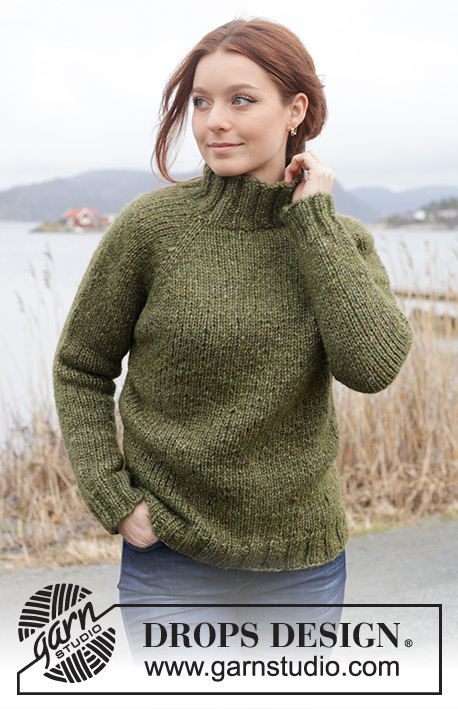
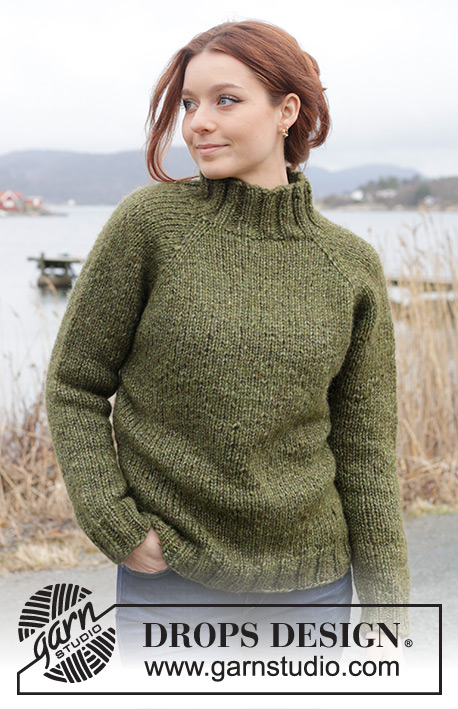


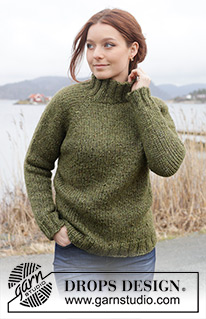
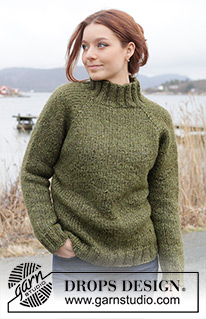
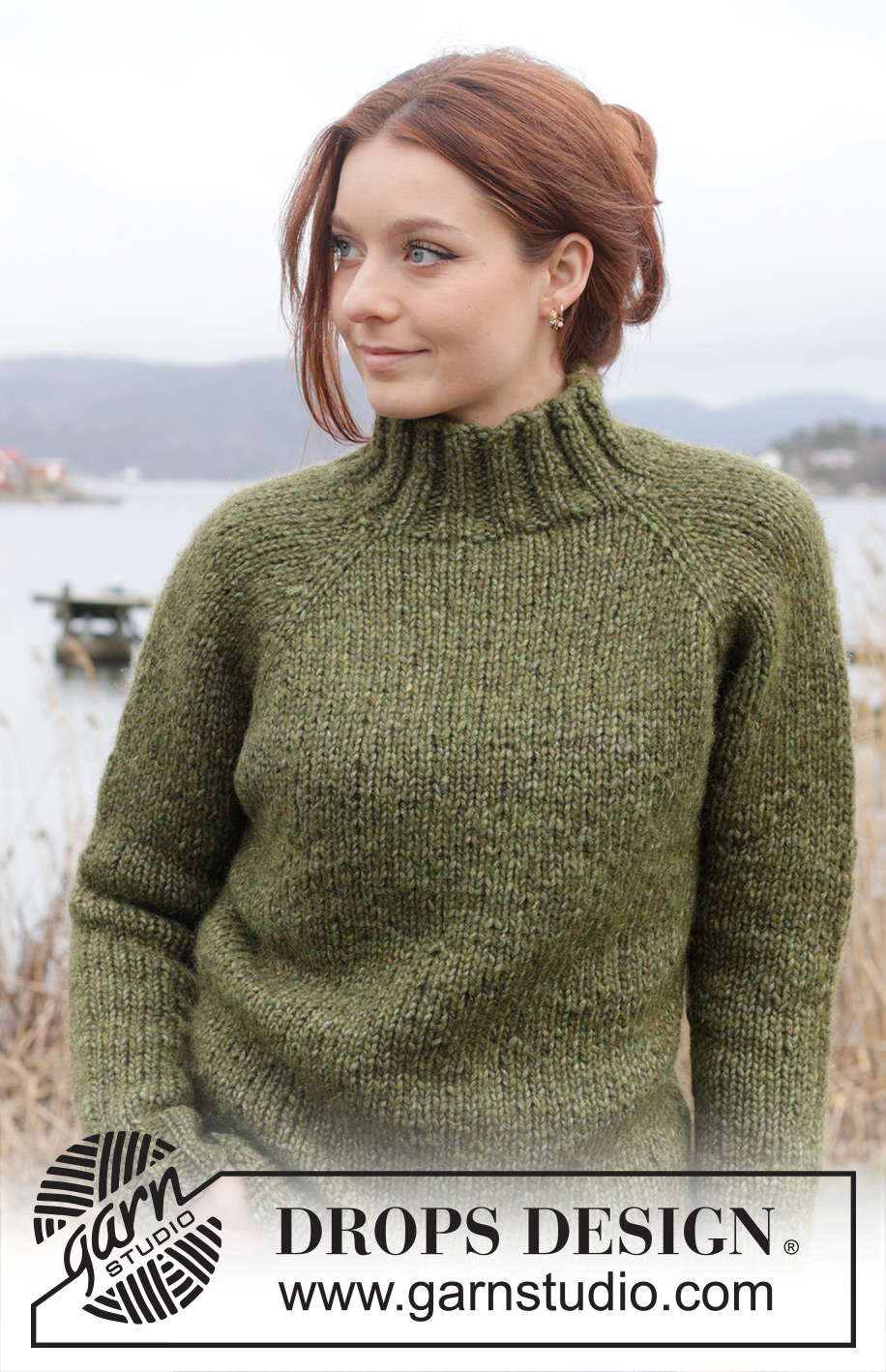
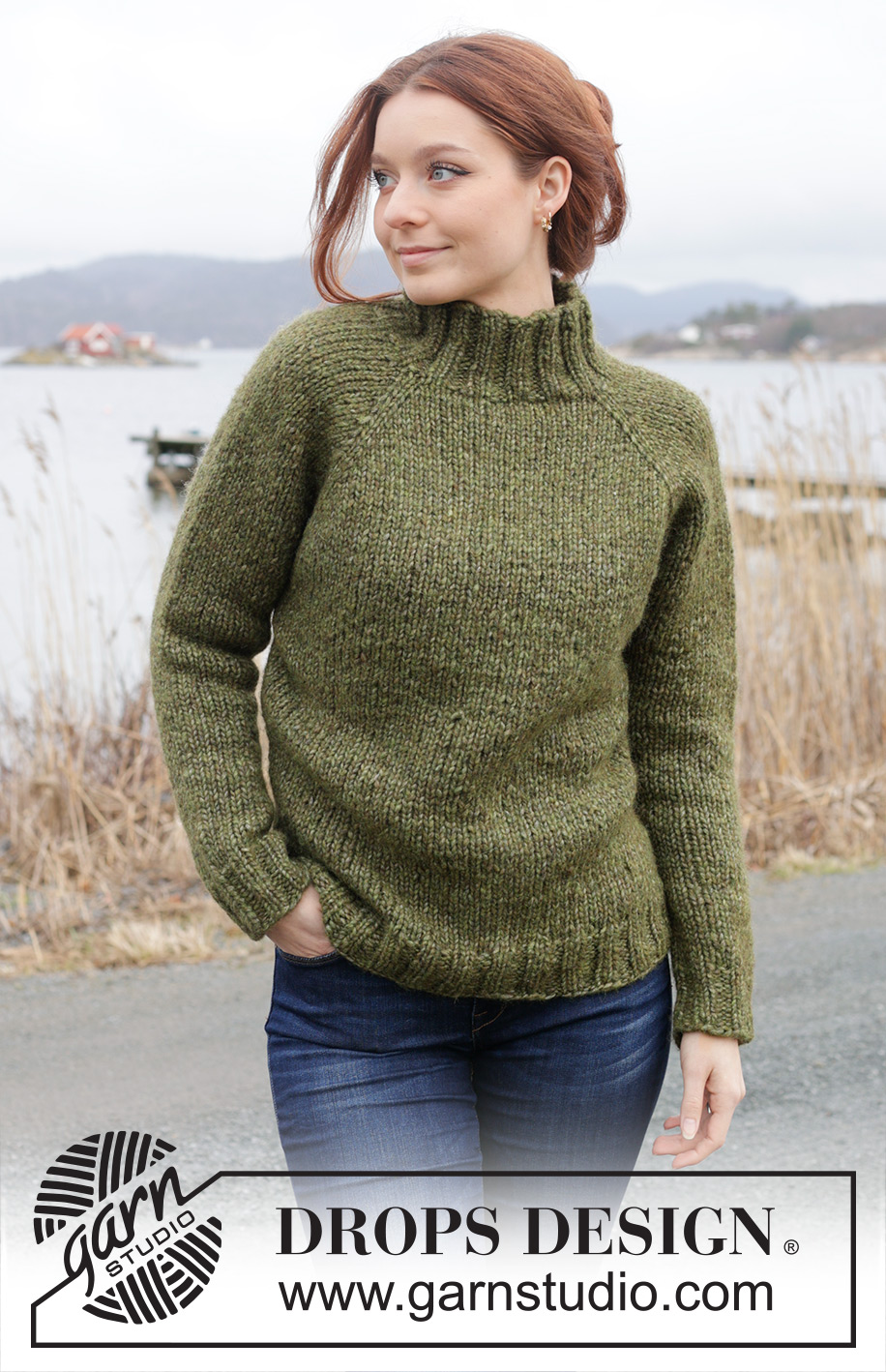

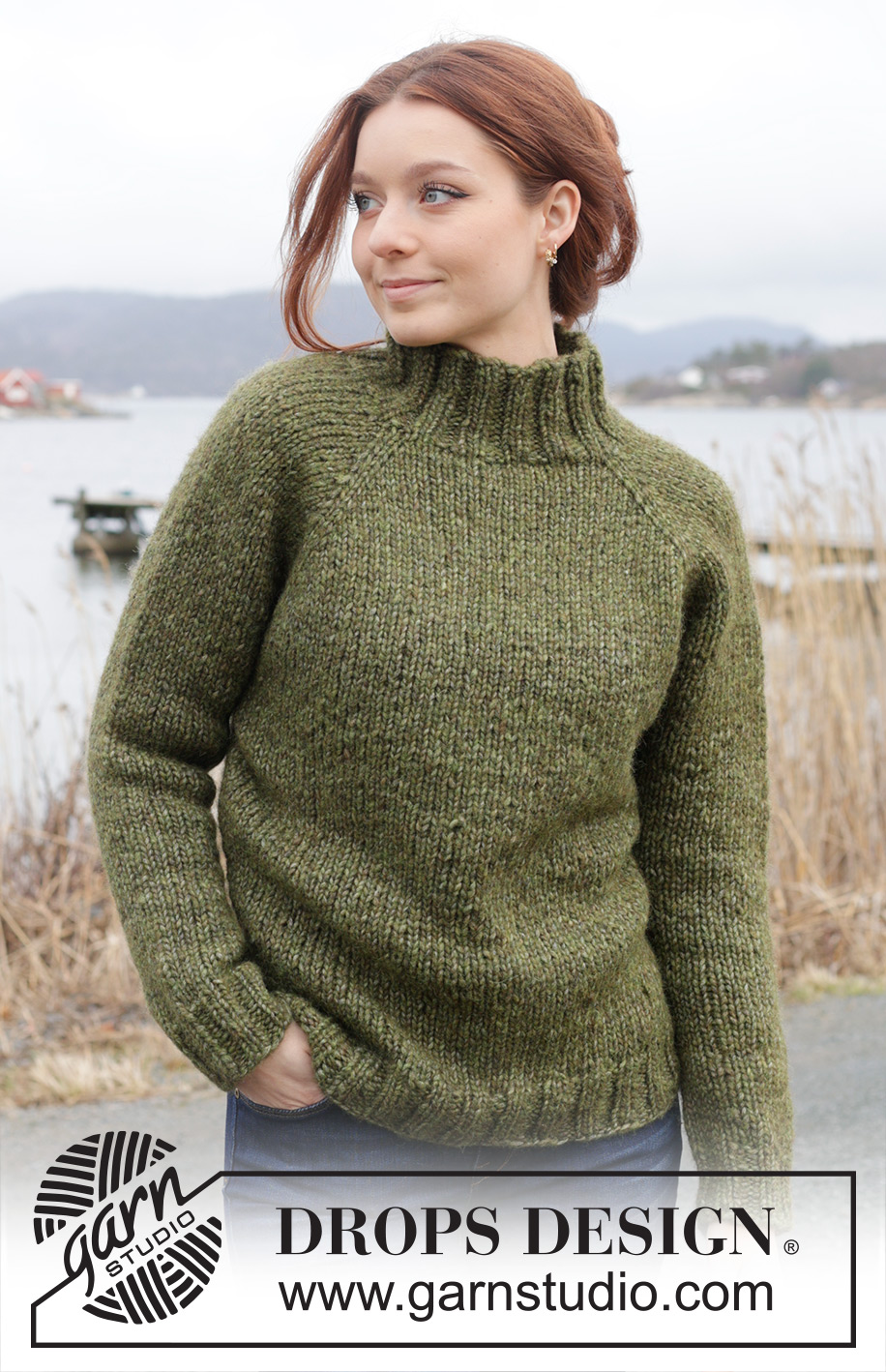

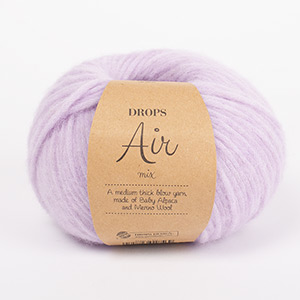
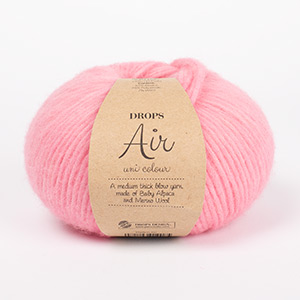




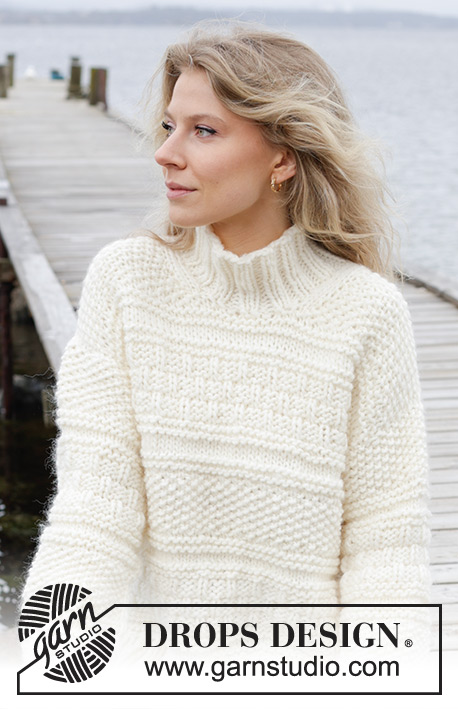











































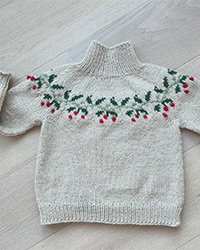
Post a comment to pattern DROPS 244-17
We would love to hear what you have to say about this pattern!
If you want to leave a question, please make sure you select the correct category in the form below, to speed up the answering process. Required fields are marked *.